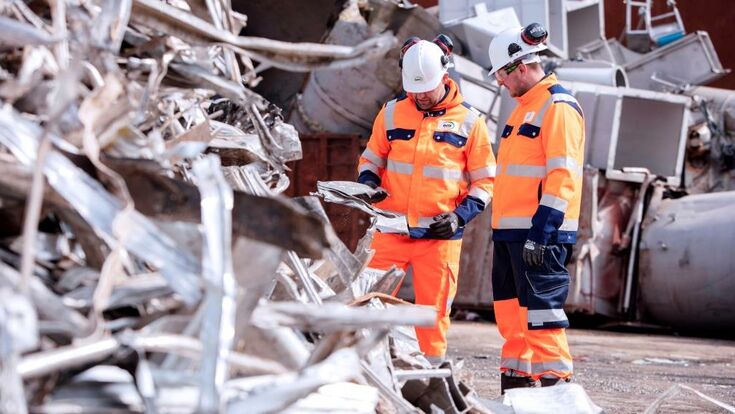Innovation : Innovative new process: Thermal metal recovery from tertiary waste

Functional product requirements lead to complex material mixtures in product designs, making recycling increasingly difficult. Little information is available regarding recycling performance, and even less on the true recycling rates that are possible and on how recycling systems can be improved. As a result, metals are often lost from the circular economy, and primary resources need to be increasingly exploited to cover the demand.
Currently, no sustainable final recovery solution exists for the low metal content residues from the shredder light fraction (SLF) and shredder heavy fraction (SHF) treatment coming from end-of-life vehicles (ELV) processing. The thermal metal recovery plant (TMG) will close the cycle. TMG represents an innovative pyrometallurgical process that enables the next level of further processing of fine-grained residues from an existing mechanical shredder residue processing plant.
The TMG process
The planned process concept of TMG consists of seven main steps (see box). The major innovative aspect of the idea is a close inter- play between a metallurgical treatment in a top-blown rotary converter (TBRC), a separation furnace and comprehensive off-gas cleaning technology for low metal content fine-grained residues from pre-processed end-of-life products serving as secondary reference materials (RMs).
Step 1 – Briquetting
Sand, fluff, other secondary materials and additives (if necessary) are pressed mechanically (cold-bonded briquetting). During the briquetting step, heat is generated, which contributes to the material strength. Besides this, the used particles interlock with each other to form stable agglomerates with higher density, which is important for ensuring an efficient charging process to the melting bath.
Step 2 – Reducing treatment
A top-blown rotary converter is operated at 1,250°C, while the process itself is expected to be autothermic, i.e. an operation without primary fossil energy sources should be possible. In previous small-scale trials, an autothermic process could be realised. In this context, an important question is to evaluate a reducing treatment without adding a carbonaceous reducing agent, since theoretically, the organic carbon in the briquettes is converted into a CO- and H2-rich reducing gas in the TBRC to act as a reducing agent.
Step 3 – Separation furnace
The separation furnace can be operated with a reducing or oxidising atmosphere to separate the metal alloy from the iron-rich mineral fraction due to density differences. A certain viscosity is necessary to realise an efficient metal-slag separation. A further converting step could be necessary to obtain the specified quality of the metal alloy. However, it is extremely important to keep losses of metals such as copper to a minimum. Therefore, it may be useful to partially reintroduce the slag into the TBRC for a further conversion step.
Step 4 – Post-combustion
Due to legislation (Austrian Waste Incineration Directive, AVV), post-combustion is needed to comply with the emission regulations, i.e. a minimum combustion temperature of 1,100°C must be guaranteed for at least two seconds to decompose pollutants such as furans and dioxins in the TBRC off-gas.
Step 5 – Combined heat and power process
The production of superheated steam is realised in a waste heat recovery boiler. This superheated steam produces electrical energy and thermal energy for the district heating network.
Step 6 – Dust product generation
The zinc and lead re-oxidised during post-combustion (step 3) are separated in a gas filter.
Step 7 – Off-gas purification
Off-gas is cleaned according to the AVV and according to the state of the art (BAT). The first step in the off-gas cleaning step is a dry-based sorption. Fine-grained active carbon and calcium-based sorbents are injected into the off-gas stream to remove heavy metals, halogens and sulphur dioxides from the off-gas. Finally, selective catalytic reduction of nitrogen oxides is carried out. The cleaned off-gas is released to the ambient atmosphere. The off-gas cleaning system more than meets the requirements of the 2019 BAT Document for Waste Incineration.
